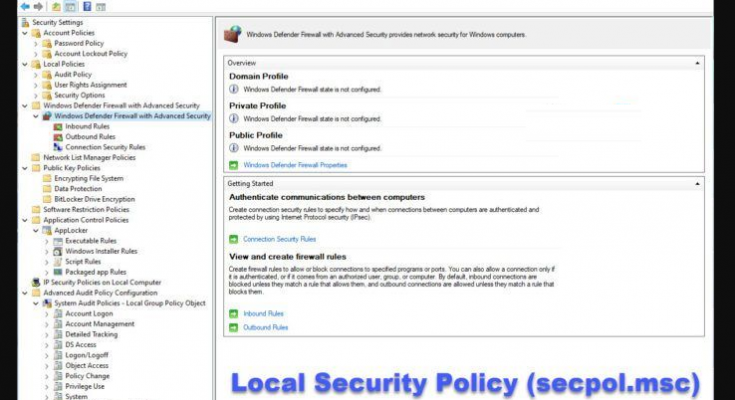If you are looking for the guide how to open Local Security Policy (secpol.msc) on Windows 11/10, this article is for you. Secpol.msc or Local Security Policy Editor is a Windows administration tool to configure and manage security related polices on Windows.
You will find it available in Group Policy Editor. It includes a subset of registry policies (registry entries) such as password and account lockout policies, software restriction policies, application control policies, network-related polices and etc.
There are total ways possible ways we have described in this article on how you can open Local Security Policy on Windows 11/10 that help you to take the needed actions on the respective policies. Here these are:
Different methods how to open Local Security Policy (secpol.msc) on Windows 11/10
Method 1: Perform Windows Search
- On your Taskbar area, you can see Windows Search icon, click on it,
- Type Local Security Policy in the Search box,
- Local Security Policy app will appear in the search results,
- Click on the Run as Administrator option on the right-panel.
Fix 2: Use Run prompt
- Press Win+ R key combination to open Run dialog box,
- In the dialog box, type secpol.msc,
- Finally, hit Enter.
Fix 3: From Control Panel
- From the Windows Search, type Control Panel and open it,
- Switch to the Small Icons view,
- Click on Windows Tools,
- Then, click Local Security Policy.
Fix 4: Use Windows File Explorer to open Local Security Policy (Secpol.msc)
- Open Windows Search,
- Type in File Explorer,
- Click on Open option on the right to open File Explorer,
- Type secpol.msc in the address bar and hit Enter.
Fix 5: Use Command Prompt or Windows PowerShell
These are the windows command-line tools. This is another way how to open Local Security Policy (secpol.msc) on Windows 11/10:
- On the Windows Search, type in Command Prompt to open Command Prompt or PowerShell to open Windows PowerShell,
- Make sure you run the app as Administrator,
- Click on Yes if received UAC prompt,
- In the Command line/ PowerShell window, type secpol and hit Enter.
Fix 6: Use Task Manager
- Right-click on Start menu,
- Select Task Manager,
- Go to the File menu, and click on Run new task,
- In the Create new task window, type secpol.msc and hit Enter.
Fix 7: Use Local Group Policy Editor
- Press Win + R to open Run Window,
- Type gpedit.msc and hit Enter,
- In the Local Group Policy Editor window, navigate to the below path:
Computer Configuration\Windows Settings\Security Settings
Method 8: Use Desktop Shortcut
You can also create a desktop shortcut to quickly launch Local Security Policy Editor:
- Open File Explorer,
- Go to the below path:
C:\Windows\System32
- Search for secpol,
- Right-click on it and select Create a shortcut,
- The shortcut will appear onto the desktop the then,
- You can now launch the Local Security Policy Editor through double-clicking it.
Conclusion
That’s all! We have provided the different possible how to open Local Security Policy (secpol.msc) on Windows 11/10. Hope so, this information is helpful for you. Comment down below and share your experience on this post.



